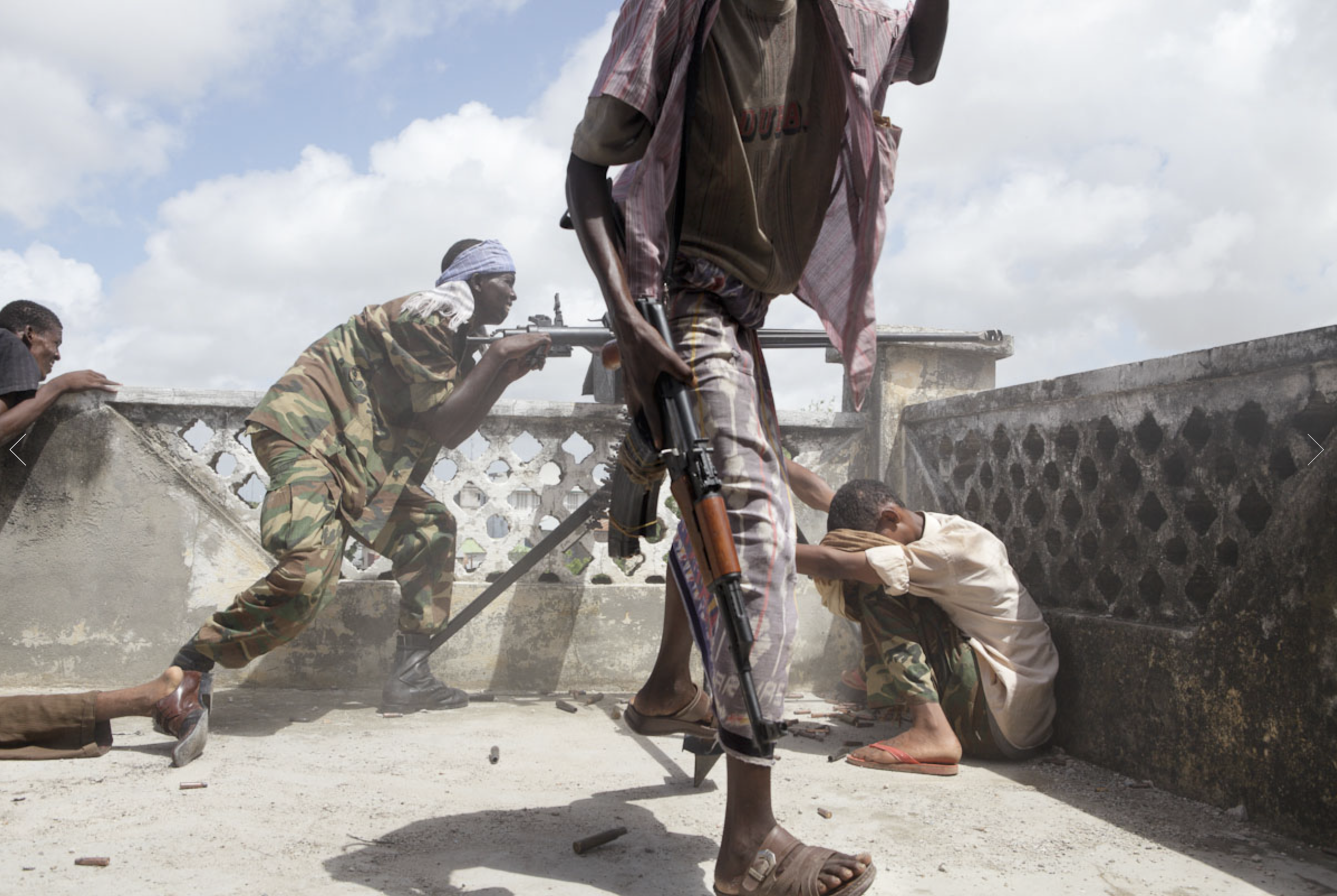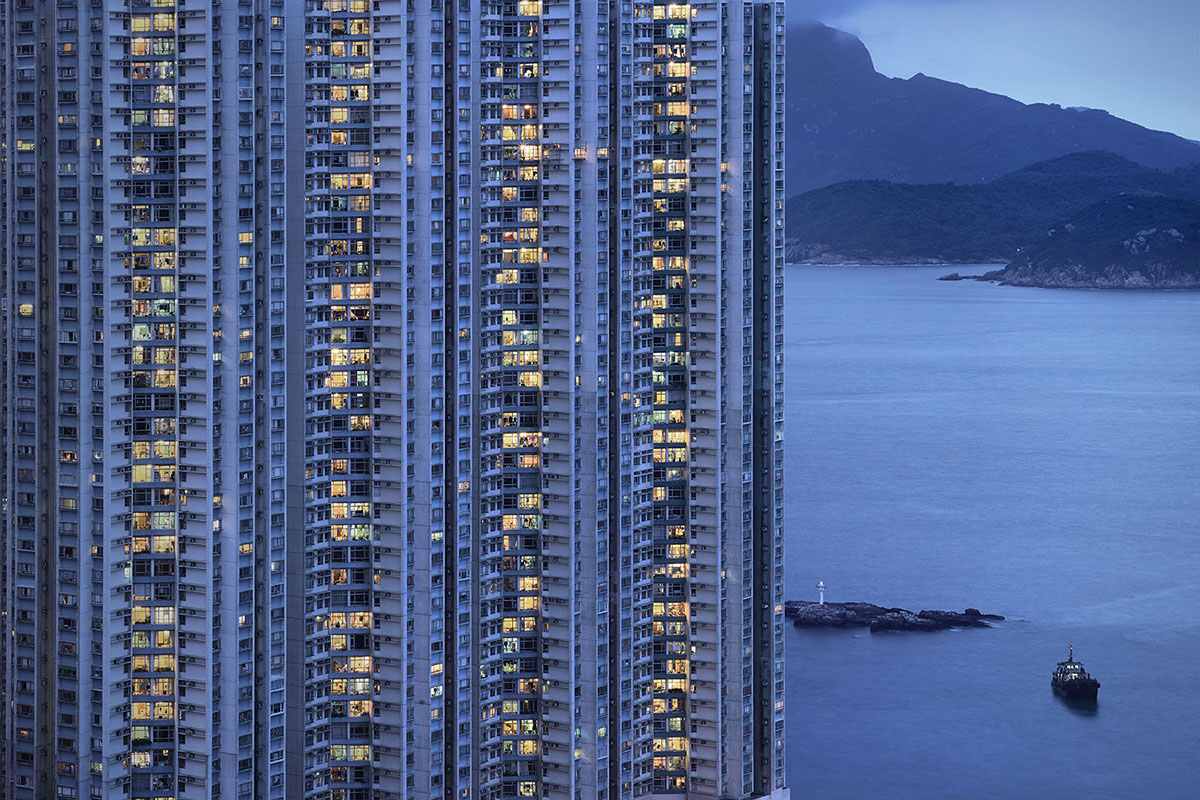Paris in the light of two photo festivals
In November 2017, the annual photo art fairs "Paris Photo" and "fotofever" took place again. Exhibitors were numerous art galleries at both fairs. While the galleries represented on the Paris Photo usually represent already established artists, some of which are even no longer alive, fotofever is clearly focused on living and developing artists (an example of this is here to read).
The international contemporary photography art fair fotofever returned to Paris for its 6th edition, with 80 galleries presenting 150 emerging artists. For Paris Photo it was already the 21st edition. While Paris Photo has traditionally been taking place in the "Grand Palais" near Champs Elysee for many years, fotofever is well established in the Caroussell de Louvre. Since both art fairs take place on the same three days, and both locations are only about 30 minutes apart, I used again the amazing opportunity to visit both fairs and to gain views on different content.
First some overall and superficial impressions: During the last years the exhibited photographs at both fairs seem to be getting smaller again. Perhaps one would like to attract more private collectors in addition to collecting institutions, who intend to hang up the pictures in their own household or office. The almost ubiquitous "old" printing methods seem to be on the decline.
The image content is still widely scattered. Places, people and experimental are strongly represented. The galleries at both fairs are international. Following are some examples that I have noticed along with many others on the Paris Photo:
Inevitably I had to think of the painter Edward Hopper in the pictures of Larry Sultan (1946-2009) , who was represented in Paris by the Galerie Thomas Zander. His picture Bottega Veneta # 3 plays unmistakably with the mood of Edward Hopper. Larry Sultan was raised in the San Fernando Valley. In his work, Sultan deals with cultural phenomena of Southern California, which can often be taken as indicators of more general developments and hopes. His early work Evidence from the 1970s has become a milestone in conceptual photography.
Larry Sultan, Bottega Veneta #3, 2008, © The Estate of Larry Sultan, courtesy Galerie Thomas Zander, Cologne
Guido Guidi (born 1941 in Italy) represented by the gallery SAGE Paris, works with the temporal aspect of image formation. While some photographers shoot the same subject at different times of the year, Guidi uses fewer hours of sunshine to show an otherwise profane subject differently.
© Guido Guidi / SAGE Paris.
Richard Learoyd (born 1966 in UK), represented by the gallery PACE / MACGILL, shows images from a camera obscura, i. a light box without a lens that requires long exposure times of several seconds or even minutes or hours. Typically landscapes are photographed with this camera, using this technique. A good example are seascapes in which the long exposure times lead to a smoothing of the waves, so farnothing special. But the subjects of Richard Learoyd are human, both portraits and nudes. The images are strongly influenced by vignetting, as is usual for the camera obscura. The nude photography seems timeless, resulting from the direct analogue process rather than digital postprocessing.
RICHARD LEAROYD , Freya, 2014, © Richard Learoyd; courtesy Pace and Pace/MacGill, New York
At the fair I also talked to Matthias Bruggmann (born 1978), represented by Galerie Polaris from Paris. His images of war appear at first glance like war reports and I did not immediately think of art photography. In the photographer's opinion, his pictures can still be both war reportage and art. He speaks of a "gravity shift". And indeed some pictures reminded me of ancient battle plans on oil paintings. With the difference, however, that today's pictures reflect unresolved conflicts and often unspeakable suffering so insistent because they present themselves today. Problems our generation is responsible for. Does that speak against viewing and exhibiting pictures as art? Probably not, but I have to think more about that.
© Matthias Bruggmann; courtesy of the photographer.
The Frankfurt based artist Martin Liebscher (born 1964 in Germany) was presented at the Paris Photo with his "family pictures" by martinasbekgallery. Liebscher designs his pictures by bringing himself into the picture many times in different positions. The crowd shown consists only of the photographer himself. I especially liked the picture "FIFA Boardroom, 2017" in the format 300cm x 150 cm.
Perhaps as a modern counterpart to Martin Liebscher, a similar concept was presented at fotofever by the gallery TEZUKAYAMA Gallery from Japan, Osaka. The photographer Daisuke Takakura (born 1980 in Japan) shows in "monodramatic / crowd" a group of Asian schoolgirls, which consists of image manipulation from the same person. For me it would be interesting to know wheter Liebscher and Takakura know each other.
© Daisuke Takakura; Monodramatic / Crowd, 2014, Digital C-type print , 42 x 59.4 cm Ed. 10, 145.6 x 103 cm Ed. 5
© Daisuke Takakura; Monodramatic / Urban Dance, 2014, Digital C-type print, 42 x 59.4 cm Ed. 10
Among the emerging artists at the fotofever fair, in addition to the above-mentioned Daisuke Takakura, I especially noticed the following other artists.
Romain Jacquet-Lagrèze, a Frenchman living in Hong Kong. Its series "Blue Moments" of Hong Kong contains impressive monochromatic pictures of cityscapes and skylines with highrise buildings in HK. "The Blue Moment" is the small period of time in the dawn of a new day. Romain is based on three pillars: Firstly chaos in architecture, secondly contrasts between architecture and impressive nature and third waterscapes in the skyline. My detailed report about Romain and his view on Hong Kong is here in the blog.
© Romain Jacquet-Lagrèze
The fifty dots gallery from Spain showed u.a. the Spanish photographs Aida Pascual (born 1987 in Spain). One of her main inspiration is the romantic English painter Caspar David Friedrich. Pascual's seems to exude the same effect: meditation, romantic nostalgia and sorrowful memories. Her series "Arcadia" plays with an imaginary place, created and described by numerous poets and artists. It refers to a utopian territory in which one lives in communion with nature. It is a reflection on the supremacy of the natural or human being which shows the intimate spaces of solitude and silence in the feeling of the character that appears in the photograph.
© Aida Pascual; courtesy Gallery fiftydots, Barcelona.
© Aida Pascual; courtesy Gallery fiftydots, Barcelona.
Both art fairs were a firework of ideas and a source of inspiration. In addition, they were one of the best ways for art lovers to spend cold November days in Paris. Were you also in Paris and did you notice other artists or would you be impressed by other artists? Write me a message.






